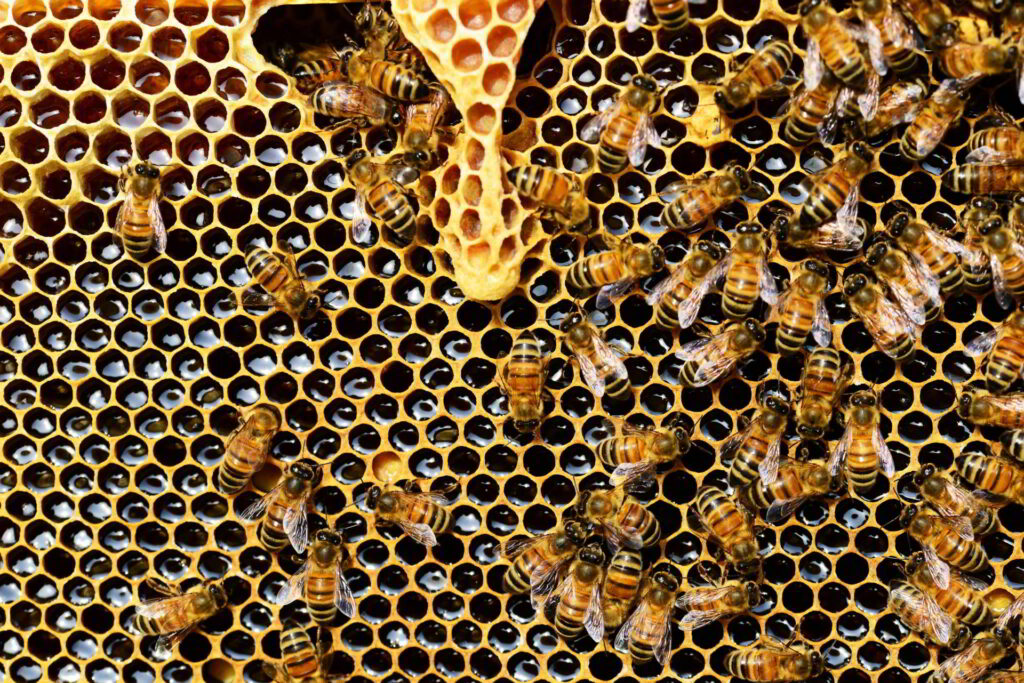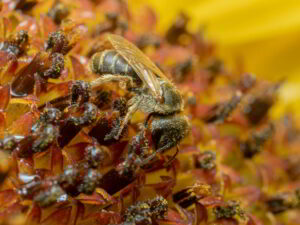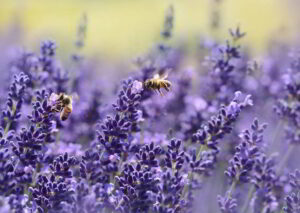Getting Ready for Spring Beekeeping
Spring is a critical time for beekeepers as they prepare for increased activity in their hives. Ensuring hive health and establishing new colonies are essential steps in optimizing the productivity and well-being of the bees.
Monitoring Hive Health
Regularly monitoring the health of bee colonies is paramount in early spring. This helps in ensuring that the bees have adequate resources for feeding young bees and maintaining warmth.
- Colony Inspections: Regular inspections should be carried out to monitor for common brood diseases like Chalkbrood, Sacbrood, and European Foulbrood, which are most likely to appear during spring (Penn State Extension).
- Varroa Mite Control: Varroa mites pose a significant threat as they weaken bees by feeding off their fat bodies and transmitting lethal viruses. The viral titers in bees increase from spring to fall, making mite control crucial (Penn State Extension). Effective varroa mite control in the fall is linked to better winter survival rates.
A comprehensive hive health check includes:
| Task | Frequency | Notes |
|---|---|---|
| Inspecting for disease | Weekly | Look for signs of Chalkbrood, Sacbrood, and European Foulbrood |
| Checking for Varroa mites | Every 2 weeks | Use sticky boards or alcohol wash for accurate mite counts |
| Assessing food stores | Weekly | Ensure adequate honey and pollen supplies |
| Monitoring brood pattern | Weekly | A healthy brood pattern is consistent and well-distributed |
Establishing New Colonies
Spring is the ideal time for establishing new colonies. This can be done either by purchasing bee packages or opting for nucleus colonies (nucs).
- Bee Packages: Bee packages typically consist of around 10,000 worker bees and a queen. These are a popular choice for beekeepers looking to expand their apiary.
- Nucleus Colonies (Nucs): Nucs are pre-established mini colonies containing bees, brood, pollen, honey, and a queen. They offer a more stable and immediate start compared to packages.
| Option | Composition | Ideal For |
|---|---|---|
| Bee Packages | ~10,000 workers, 1 queen | Starting new colonies from scratch |
| Nucleus Colonies (Nucs) | Bees, brood, pollen, honey, 1 queen | Quick establishment and early spring resources |
Preparing for spring involves meticulous planning and constant monitoring. For more in-depth insights and tips, explore spring beekeeping practices and our spring beekeeping checklist.
Managing Swarming Behavior
Swarming is a natural process for bees, but for beekeepers, managing this behavior is key to maintaining healthy hives and optimizing honey production. Two effective techniques for managing swarming are making splits and introducing mated queens.
Making Splits
One of the most effective spring beekeeping techniques for managing swarming is making splits. This process involves dividing a single colony into two, which helps control the swarm and can increase colony numbers. According to Penn State Extension, making a split can prevent a colony from becoming overcrowded and starting to swarm.
Here’s how you can make a split:
- Identify the Queen: Locate and separate her along with a portion of the brood and worker bees into a new hive.
- Leave Queen Cells: The original hive is left with one or more queen cells. This allows the colony to rear a new queen.
- Check Resources: Ensure both colonies have enough food and resources.
Timing is crucial (Summit Beekeepers). Performing splits early in spring, when bees have abundant food stores and stronger colonies, can be highly effective (Mann Lake Ltd).
Introducing Mated Queens
Another important technique for managing swarming behavior is introducing mated queens. This method involves placing a mated queen into a hive, which can help stabilize and expand the colony. Perfect Bee states that the presence of young queens with stronger pheromones can reduce the likelihood of swarm cell construction.
Steps for introducing a mated queen:
- Remove Old Queen: If necessary, remove the existing queen from the hive.
- Introduce the New Queen: Place the mated queen in the hive using a queen cage, allowing the colony to become accustomed to her scent.
- Monitor Acceptance: Over a week, monitor the hive to ensure the new queen is accepted.
These practices not only help manage swarming but also prepare your hive for a strong and productive spring season.
For more detailed steps and additional beekeeping tips, check out our articles on spring beekeeping management and spring beekeeping checklist.
Dealing with Varroa Mites
Managing Varroa mites is a critical aspect of spring beekeeping techniques. Varroa mites can weaken your bees by feeding on their fat bodies and spreading harmful viruses. Effective monitoring during the summer and thorough treatments in the fall can help keep your hive thriving.
Summer Monitoring
Regular monitoring of Varroa mites is essential. Beekeepers measure the number of mites per 100 bees on a regular schedule, aiming to keep mite levels low. Maintaining levels around 2 mites per 100 bees is considered manageable.
To perform summer monitoring, you can use several methods, including:
- Powdered Sugar Roll: Coat a sample of bees with powdered sugar, dislodging the mites. Count the mites to estimate the infestation level.
- Alcohol Wash: A more accurate but lethal method where bees are submerged in alcohol, which agitates and removes the mites for counting.
- Sticky Boards: Place sticky boards under a screened bottom board to catch falling mites.
| Monitoring Method | Mites per 100 Bees |
|---|---|
| Target Level | ≤2 |
| Threshold for Action | >3 |
Cultural controls complement monitoring efforts. These include purchasing mite-resistant bee stock, providing small cell comb, and implementing brood breaks to disrupt mite reproduction.
For a comprehensive guide to spring beekeeping practices, monitoring is just one part of effective Varroa mite management.
Fall Treatments
Fall treatments are crucial for the survival and health of the hive over winter. There’s a direct correlation between fall mite control and the population health of winter bees.
Effective fall treatments can include:
- Chemical Treatments: Use miticides such as Apivar, Mite Away Quick Strips (MAQS), or oxalic acid. Always follow the manufacturer’s guidelines and consider rotating chemicals to prevent resistance.
- Mechanical Approaches: Applying treatments like powdered sugar, using screened bottom boards, and removing drone brood (a preferred breeding site for mites).
| Treatment | Timing | Effectiveness |
|---|---|---|
| Apivar | Early Fall | High |
| MAQS | Late Fall | Moderate |
| Oxalic Acid | Post-Harvest | High |
| Screened Bottom Board | Throughout Fall | Moderate |
Combining these strategies with continuous monitoring ensures a healthy hive. For tips on specific fall preparations and comprehensive spring beekeeping checklists, integrating cultural and mechanical controls can enhance your Varroa mite management.
For more in-depth guidelines on handling your hives, check out our articles on spring beekeeping management and spring beekeeping tips.
Winter Bee Preparation
Getting bees ready for the spring bloom means preparing them well in advance during winter. Understanding the winter bee rearing process and effective varroa mite control during this cold season is paramount for spring beekeeping success.
Rearing Winter Bees
In late summer, bee colonies begin rearing winter bees, which differ from their summer counterparts. Winter bees have a longer lifespan of up to six months, compared to the six-week lifecycle of summer bees. These bees are vital for overwintering as they possess larger fat bodies, providing necessary nutritional reserves during the cold season (Penn State Extension).
To ensure the colony rears healthy winter bees, beekeepers must focus on:
- Ensuring sufficient food stores in the hive.
- Reducing stress factors for the colony.
- Preparing the hive structure to withstand winter conditions.
Winter bees’ primary role is to maintain the hive temperature and support the queen once she begins laying eggs again in spring. Ensuring the colony’s health during winter directly impacts spring readiness (spring beekeeping checklist).
| Bee Type | Lifespan (weeks/months) | Key Characteristics |
|---|---|---|
| Summer Bees | 6 weeks | Short-lived, primarily foraging |
| Winter Bees | Up to 6 months | Larger fat bodies, maintain hive temperature |
Varroa Mite Control in Winter
Varroa mite infestations can devastate a bee colony, especially during the cold months. Keeping varroa mite levels in check is essential for the survival and health of winter bees. Beekeepers commonly use Integrated Pest Management (IPM) strategies to manage mite populations effectively.
Methods for Varroa Mite Control:
- Cultural Approaches:
- Purchasing mite-resistant honey bee stock.
- Providing small cell comb.
- Implementing brood breaks to disrupt mite reproduction.
- Mechanical Approaches:
- Using screened bottom boards.
- Drone brood removal.
- Applying powdered sugar.
Ensuring timely mite control in the fall shows a direct correlation with the health of the winter bee population (Penn State Extension). Regular monitoring is crucial, aiming to keep mite levels below or around 2 mites per 100 bees, which is considered a safe threshold.
| Time of Year | Varroa Mite Level (per 100 bees) |
|---|---|
| Fall | < 2 |
| Winter | < 2 |
By focusing on effective varroa mite management and rearing healthy winter bees, beekeepers can significantly enhance their hive’s readiness for the active spring season (spring beekeeping management). Proper winter prep ensures that the colony thrives as the blooms begin to appear.
Best Practices for Spring Beekeeping
Spring beekeeping involves a range of activities to ensure hives are prepared for the blooming season. Two critical components are planning for bee forage and conducting thorough hive inspections.
Bee Forage Planning
A successful spring season starts with effective bee forage planning. Providing abundant and diverse forage sources helps support colony health and productivity. Beekeepers should focus on planting a variety of flowers and plants that bloom at different times throughout the season. This ensures a consistent supply of nectar and pollen.
In Northeast Ohio, some of the best flowers and plants for bee forage include:
- Dandelions: Early bloomers providing pollen.
- Clover: A great source of nectar and pollen.
- Wildflowers: Varieties such as goldenrod and asters offer late-season forage.
Here’s a helpful table for planning forage in Northeast Ohio:
| Plant/Flower | Blooming Period | Nectar | Pollen |
|---|---|---|---|
| Dandelions | Early Spring | Moderate | High |
| Clover | Late Spring | High | Moderate |
| Goldenrod | Late Summer | High | Moderate |
| Asters | Fall | Moderate | High |
Detailed forage planning is crucial for maintaining strong colonies throughout the season. For more tips, check out our spring beekeeping tips.
Hive Inspection Notes
Regular hive inspections are essential during spring. Inspecting hives helps beekeepers monitor the health and behavior of their colonies, enabling timely interventions when needed.
Key Areas to Inspect:
- Brood Pattern: Check for a healthy brood pattern. A solid, consistent pattern indicates a healthy queen and a strong colony.
- Nectar and Pollen Stores: Ensure there are sufficient stores. Beekeepers should also keep an eye out for backfilling, where bees fill cells in the brood nest with nectar, reducing queen pheromone levels and potentially triggering swarming behavior (Perfect Bee).
- Queen Cells: Look for queen cells as their presence indicates the colony may prepare to swarm. Address early signs of swarming by making splits or introducing mated queens (Perfect Bee).
- Varroa Mites: Monitor mite levels to prevent infestations that can weaken colonies.
An inspection log helps in recording observations and any actions taken. Here’s a simple format for hive inspection:
| Date | Brood Pattern | Nectar/Pollen Stores | Queen Cells | Varroa Count | Actions |
|---|---|---|---|---|---|
| MM/DD | Good/Fair/Poor | Sufficient/Low | Yes/No | # Mites/100 bees | Any actions taken |
Regularly updating this log helps in developing a clear understanding of hive health over time. For a comprehensive spring beekeeping checklist, visit our resource section.
Spring beekeeping is all about preparation and proactive management. By focusing on quality forage and thorough inspections, beekeepers can ensure their hives thrive during this active season. For more best practices, check out our guide on spring beekeeping practices.
Tools and Technology for Beekeepers
Preparing for the active season of spring beekeeping involves more than just hive management. The right tools and technology can make a significant difference in the efficiency and safety of your beekeeping activities.
Protective Gear Selection
Choosing the right protective gear is essential for ensuring safety and comfort while working with bees. Various options are available, each offering unique benefits:
Full Suits: The ComfortPro Full Suit With Fencing Veil provides superior protection and unmatched comfort for beekeepers who demand the best.
Ventilated Pants: The ComfortPro Ventilated Beekeeping Pants offer versatile protection for every task in beekeeping.
Gloves: Heavy-duty gloves are crucial for handling bees safely. Apis Tactical Heavy Duty Beekeeping Gloves provide maximum protection, comfort, and durability. Alternatively, the ComfortPro Ventilated Goatskin Beekeeping Gloves offer enhanced comfort, emphasizing the importance of flexibility in beekeeping activities.
| Gear Type | Product | Features |
|---|---|---|
| Full Suit | ComfortPro Full Suit With Fencing Veil | Superior protection, unmatched comfort |
| Pants | ComfortPro Ventilated Beekeeping Pants | Versatile protection, flexible |
| Gloves | Apis Tactical Heavy Duty Beekeeping Gloves | Maximum protection, comfort, durability |
| Gloves | ComfortPro Ventilated Goatskin Beekeeping Gloves | Superior protection, enhanced comfort |
Smart Hive Technology
Smart hive technology is revolutionizing the beekeeping experience by providing real-time data and insights about hive conditions. This technology helps beekeepers monitor and manage their hives more efficiently.
Electric Smokers: The Anel Electric Heated Vaporizer/Smoker is an electric heated tool that serves as the ultimate 3-in-1 beekeeping device. It can significantly ease the process of calming bees and maintaining a peaceful hive.
Hive Monitoring Systems: Smart hive monitoring systems allow beekeepers to track hive temperature, humidity, and activity levels remotely. These systems provide valuable data that can help in making informed decisions about hive management.
Scales and Sensors: Implementing scales under the hive and sensors inside can offer insights into hive weight changes and environmental conditions. This data aids in understanding the hive’s health and productivity.
To learn more about spring beekeeping, including spring beekeeping management and the essential spring beekeeping checklist, explore our additional resources.
By combining the right protective gear with modern technology, beekeepers can enhance their spring beekeeping practices and ensure the health and productivity of their colonies. For more spring beekeeping tips and best practices, continue exploring our articles.




